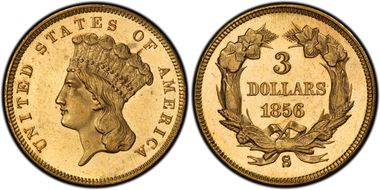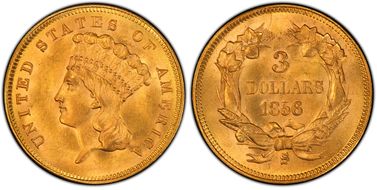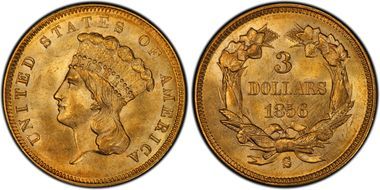Ron Guth:
The San Francisco Mint produced Three-Dollar gold pieces in four years. Of those four, the 1856-S has the largest mintage. However, at 34,500 coins, this is a puny amount by any standard, certainly in comparison to the multi-million and billion coin mintages of today.
The mintmarks on the 1856-S Three-Dollar gold pieces come in three different sizes: Small, Medium, and Large. According to Q. David Bowers and Doug Winter, 80% are of the Medium Mintmark variety, 2-3% are of the Large Mintmark variety, and approximately 15% are of the Small Mintmark variety. The Medium and Large Mintmarks are very difficult to tell apart; the Small S is clearly smaller than any other.
Mint State 1856-S Three-Dollar gold pieces are very rare, with perhaps 10-20 known (we know of roughly ten demonstrably different examples. The best appear to be a trio of PCGS MS64's.





